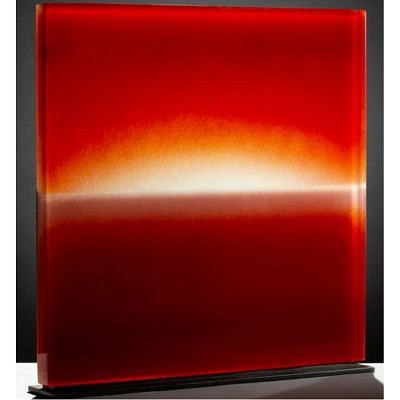Turner Engravings and Etchings 1812 - 1826, 1860
About Seller
522 South Pineapple Avenue
Sarasota, FL 34236
United States
Sarasota Estate Auction specializes in a wide variety of furniture, antiques, fine art, lighting, sculptures, and collectibles. Andrew Ford, owner and operator of the company, has a passion for finding the best pieces of art and antiques and sharing those finds with the Gulf Coast of Florida.
Two ways to bid:
- Leave a max absentee bid and the platform will bid on your behalf up to your maximum bid during the live auction.
- Bid live during the auction and your bids will be submitted real-time to the auctioneer.
Bid Increments
| Price | Bid Increment |
|---|---|
| $0 | $10 |
| $100 | $25 |
| $250 | $50 |
| $1,000 | $100 |
| $2,500 | $250 |
| $7,500 | $500 |
| $20,000 | $1,000 |
| $50,000 | $2,500 |
| $100,000 | $5,000 |
| $250,000 | $10,000 |
About Auction
Mar 23, 2024
Artists to include: Jorge Blanco, Julius Shulman, Salvador Dali, Picasso, LeRoy Neiman, Henry Moore, Darrell Crisp, Karel Appel, Matisse, Itzchak Tarkay, Kiyoshi Saito, Sharon Boysel, and others. There is also a Knoll Plattner Table, a lot of 7 Original Peanuts Drawings By Reuben Timmins, Rare Books, Art Glass Sculptures, Modern Design and Furniture, Photographs, a Large Collection of Estate Sterling, and so much more! Sarasota Estate Auction sarasotaestateauction@gmail.com
- Lot Description
These lots are based on the engravings and etchings of Joseph Mallord William Turner (1775 - 1851), an English Romantic painter, printmaker, and watercolorist who was known for his imaginative landscapes and turbulent, often violent marine paintings. He signed many of his works "J. M. B. Turner" and was perhaps the greatest landscape artist of the 19th century. He studied at the Royal Academy of Arts, hence you often see "R.A." after his name, and his works were exhibited there when he was just fifteen. He had a love for seaside towns- you can see that in his pieces here - and he was a controversial figure who never married, but had two daughters, he became pessimistic and morose after the death of his father in 1829, and Turner lived in squalor and poor health towards the end of his life. The engravings and etchings come from a two-volume set of books by Turner called Picturesque Views of the Southern Coast of England, published in 1826, and we sold both volumes at auction earlier this year. See The Engraved Work of J. M. W. Turner by William George Rawlinson (1840 - 1928), a silk merchant who catalogued the prints of Joseph Turner. In 1878 he published Turner's Liber Studiorum: A Description and a Catalogue, and the two-volume set The Engraved Work of J. M. W. Turner came out in 1908 and 1913. The lots follow Rawlinson's numbering system: there are seven lots altogether - five have four works by Turner in each lot, one has five, and the last lot has three works by Turner, for a total of 28 pieces by the famous artist, and "R111" mean "Rawlinson's catalogue number 111", which was a view of Torbay from Brixham etched by William B. Cooke. Willam Bernard Cooke (1778 - 1855) was an English line engraver who worked with his brother and fellow-engraver George Cooke (1781 - 1834) to complete many of the drawings for Turner's Picturesque Views of the Southern Coast of England, and when you see "W. B. Cooke" on the etchings and engravings, that stands for William B. Turner's paintings go anywhere from $10 to $47,000,000, depending on the size and medium of the artwork, so choose wisely and you may get a bargain here. The last lot of Turner engravings and etchings consists of R125 (Mount Edgecombe), R126 (an engraving of Dover from Shakespeare Cliff), and R126A (a later engraving of Dover from Shakespeare Cliff). R125 is undated and entitled, but it is an engraver's proof of Mount Edgecombe in Devonshire done around 1826, according to the Tate Gallery. It reads "Drawn by J M W Turner R. A." under the plate on the lower left and "Engraved by E Goodall" under the plate on the lower right, and it is inscribed "R125 EP" in pencil in the lower left margin and "Mount Edgecombe" in pencil in the center of the bottom margin. ("EP" stands for "Engraver's Proof".) The backside is inscribed "R125 1st State Engraver's Proof Before the titles" in pencil. The image portrays more turbulent waters for Turner, and Edward Goodall was another engraver hired by W B Cooke to speed up the publication process for Picturesque Views on the Southern Coast of England, Turner's two-volume set of books which came out in 1826. The outer margins are 8 3/4 x 11 1/2 in. wide and the image itself is 6 3/8 x 9 3/8 in. wide, with a clean image, creases in the top left corner, nicks at the top margin, and faint browning on the front and backsides. R126 is an undated and untitled engraving of Dover from Shakespeare Cliff, and it was done in 1826, according to the Tate Gallery. It portrays a castle in the background and a military sentry at the entrance to the defenses on the Western Heights, strengthened to protect the harbor during the Napoleonic War. It reads "Drawn by J M W Turner R. A." under the plate on the lower left and "Engraved by George Cooke" under the plate on the lower right, it is inscribed "R126 Engraver's Proof Dover" in pencil in the lower left margin, and it is stamped "18321" on the backside. The margins measure 10 3/8 x 14 3/8 in. wide and the image measures 6 3/8 x 9 1/2 in. wide, the image has faint brown spots on it, with browning in the margins on the front and faint browning on the back. R126A is another engraving of Dover from Shakespeare Cliff, done in April, 1860. It does not mention Turner's name under the plate on the left, but says "WC April 1860" under the plate on the right, and it is inscribed "Engraver's Proof (39) R126A" in the bottom margin on the left and "Brall 12/1929" in pencil on the back-side. The margins measure 10 3/8 x 13 1/8 in. wide and the image measures 6 3/8 x 9 3/8 in. wide, with a clean image, a partial crease going up near the middle of the bottom margin, an uneven margin at the bottom, and faint browning on the front and back. #5130 #5131 #5132 Location U4
- Shipping Info
-
SHIPPING INFORMATION·
Sarasota Estate Auction IS NOT RESPONSIBLE FOR SHIPPING! BUYER MUST ARRANGE SHIPPING. All shipping will be handled by the winning bidder. Sarasota Estate Auction recommends obtaining shipping quotes before bidding on any items in our auctions. To obtain a quote, please email info@premiershipment.com. Be sure to include the lot you are interested in and address you would like the quote for. Refunds are not offered under any circumstances base on shipping issues, this is up to the buyer to arrange this beforehand.
BIDDER MUST ARRANGE THEIR OWN SHIPPING. Although SEA will NOT arrange shipping for you, we do recommend our preferred shipper Premier Shipping & Crating at info@premiershipment.com You MUST email them, please DO NOT CALLl. If you'd like to compare shipping quotes or need more options, feel free to contact any local Sarasota shippers. You can email any one of the shippers below as well. Be sure to include the lot(s) you won and address you would like it shipped to. Brennan with The UPS Store #0089 - 941-413-5998 - Store0089@theupsstore.com AK with The UPS Store #2689 - 941-954-4575 - Store2689@theupsstore.com Steve with The UPS Store #4074 - 941-358-7022 - Store4074@theupsstore.com Everett with PakMail - 941-751-2070 - paktara266@gmail.com
-
- Payment & Auction Policies
-
Available payment options
We accept all major credit cards, wire transfers, money orders, checks and PayPal. Please give us a call at (941) 359-8700 or email us at SarasotaEstateAuction@gmail.com should you have any questions about payment.
-
- Buyer's Premium



 EUR
EUR CAD
CAD AUD
AUD GBP
GBP MXN
MXN HKD
HKD CNY
CNY MYR
MYR SEK
SEK SGD
SGD CHF
CHF THB
THB






















